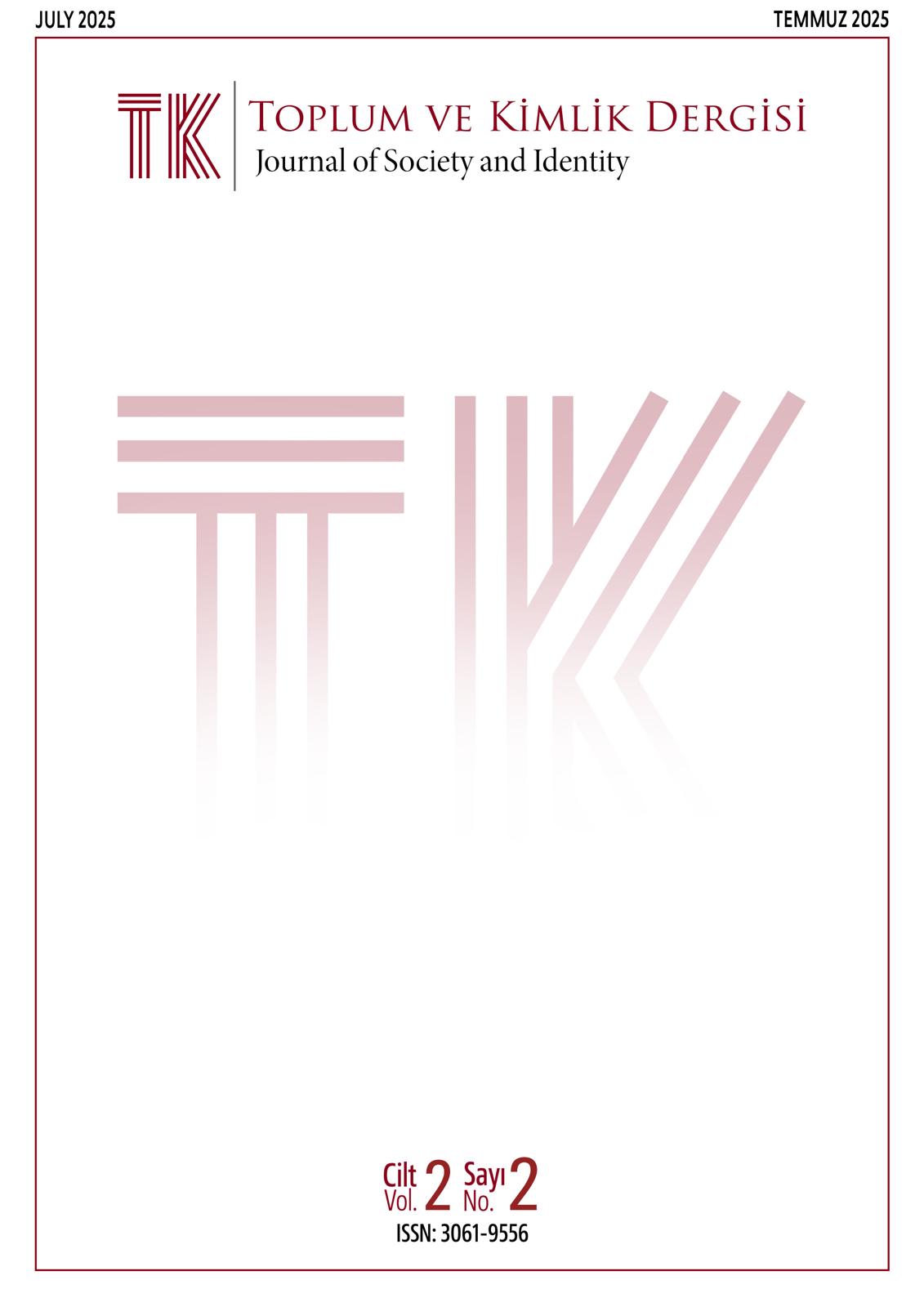Reflections of Gender Roles in Television Series from Meltem to Bahar: Is there anything Changed?
DOI:
https://doi.org/10.5281/zenodo.16638341Abstract
This study analyzes the representations of gender roles through two Turkish television series: Çocuklar Duymasın (Don’t let Children Hear), first started in 2002 and continued until 2019, and Bahar (Spring), which started in 2024. While Çocuklar Duymasın remained consistent with the mindset it was originally based on throughout its broadcast, Bahar was constructed around perspectives that are widely accepted in contemporary Turkish society. In this regard, it can be argued that these two series reflect a portrait of Turkish societal transformation over the past two decades. The study aims not only to trace this transformation through the lenses of these two series but also to analyze how gender roles are represented in the media. As a matter of fact, the media not only reflect societal values but also play a significant role in shaping them through specific norms and ideologies. Among various forms of media, television series serve as one of the most prominent platforms where this dual function is observed most intensively. The research is based upon thematic analyses conducted on these series, which were selected through a simple random sampling method, as well as relevant academic literature. The result of the study indicates that although the two series present different family models, both portray a negative prototype of masculinity in contrast to a positive representation of femininity within the context of gender roles. In Çocuklar Duymasın, alongside a family structure that is carefully preserved, a “rough” male figure who tends to resolve conflicts through aggression is contrasted with a “rational” and “strong” female character. In Bahar, however, a family dynamic on the verge of dissolution due to infidelity is depicted, wherein the “unfaithful” male is counterbalanced by a resilient and self-empowered woman guided by rational emotions.
Keywords: Gender identity, Bahar series, Cocuklar Duymasın series, media, media studies, being a woman in the media, television series.
References
Adalı, E. & İnce, M. (2025). Kadınları Uyandıran Bir Bakış mı? “Bahar” Dizisi Üzerine Alımlama Çalışması, Injocmer, 5(1), 28-43.
Akgül, F. İ. (2021). Toplumsal Cinsiyet Bağlamında İktidar İlişkileri. Social Science Development Journal, 6(25), 226-234. https://doi.org/10.31567/ssd.397
Akgül, T. E. (2024). Ekranlarda Mevsim Değişikliği: Bahar Dizisine Yönelik Duygusal Etkileşimler Üzerine Netnografik Bir Analiz. TRT Akademi, 9(22), 810-835. https://doi.org/10.37679/trta.1520049.
Aktas, C. (2001). "Bacıdan Bayana", Mülahazat, 1(1), 55-70.
Aydın, E. B. (2023). Toplumsal Cinsiyet ve Sosyal Medya Araştırmalarına Bibliyometrik Bir Bakış. Türkiye Medya Akademisi Dergisi, 3(6), 256-281. https://doi.org/ 10.5281/zenodo.8378649
Bolkal, S. (1999). Yerli Televizyon Dramalarında Değişen Cinsiyet Rolleri, (Unpublished M. A. Thesis), University of Ege, İzmir.
Çaha, Ö. (1996). Sivil Kadın : Türkiye'de Sivil Toplum ve Kadın, Ankara: Vadi Yayınları.
Çakır, S. (1992). "II.Meşrutiyet Döneminde Devlet, Aile ve Feminizm", Sosyo- Kültürel Değişme Sürecinde Türk Ailesi, Ankara: T.C. Basbakanlık Aile Arastırma Kurumu.
Çakır, S. (1996). Osmanlı Kadın Hareketi, Istanbul: Metis Yayınları.
Çelebi, E. (2022). Medyanın Toplumsal Cinsiyet Rolleri Üzerinde Etkisi, Elektronik Sosyal Bilimler Dergisi, 21(82): 822-829
Delal, Ö. & Abanoz, E. (2022). Toplumsal Cinsiyet Rollerinin Sosyal Medyada Yansıması: Sokağa Çıkma Yasağı Örneği. Akdeniz Üniversitesi İletişim Fakültesi Dergisi, 37, 80-95, https://doi.org/10.31123/akil.1079620
Doğan, O. (2024). Türk Dizilerinin En Büyük Kozu Güçlü Kadınlar Ekrana Döndü. https://episodedergi.com/tr/dergi/episode-dergi-mart-2024-sayisi/ (Erişim Tarihi: 06.07.2024).
Gecü, G. (2004). The Gender Roles in Turkish Society as Reflected in the Serial Movies: The Case of “Çocuklar Duymasın" and “Zerda”, (Unpublished Master of Art Thesis), Public Administration at Fatih University, İstanbul.
Güven, B. (2002). Çocuklar Duymasın, Ankara: Kim Yayınları.
İmançer, D. (2000). Televizyonda Toplumsa/ Cinsiyet Sembollerinin Türk Aile Dizilerinde Sunumu. (Unpublished Doctoral Disertation), Ege University, İzmir.
Marshall, G. (1999). Sosyoloji Sözlüğü. (O. Akınhay ve D. Kömürcü, Çev.), Ankara: Bilim ve Sanat Yayınları.
Oğuz. Y., G. (2000). Cinsiyet Rolleri ile İlgili Stereotiplerin Televizyonda Sunumu. Kurgu Dergisi, 17, 35-43.
Önal, H. (1999). Çok Perspektifli Eleştirel Kuramsal Açıdan Türkiye’de Yerli Diziler, (Unpublished Doctoral Disertation), Dokuz Eylül University, İzmir.
Timisi, N. (1997). Medyada Cinsiyetçilik. Ankara: T.C. Başbakanlık Kadının Statüsü ve Sorunları Genel Müdürlüğü.
Varlı Gürer, S. Z.. & Gürer, M. (2020). Toplumsal Cinsiyet Rolleri Bağlamında Türkiye'deki Televizyon Dizilerinde Sunulan Kadın Stereotipi. Alanya Akademik Bakış, 4(3), 631-650.
Yaktıl, G. (1996). Bizimkiler Dizisi Üzerine Bir İnceleme, Toplumsal Yapıdaki Kültürel İletilerin Yayılma Süreci ve Televizyon. (Unpublished Doctoral Dissertation), Anadolu University, Eskişehir.
Yıldırar, D. (2025). Toplumsal Cinsiyet Rolleri ve Medyanın Etkisi. https://blog. metu.edu. tr/e242422/toplumsal-cinsiyet-rolleri-ve-medyanin-etkisi/
Yumlu, K. (2014). Toplumsal Cinsiyet ve Medya. Galatasaray Üniversitesi İletişim Dergisi, (21), 151-155.
Downloads
Published
How to Cite
Issue
Section
License
Copyright (c) 2025 Gülay Gecü

This work is licensed under a Creative Commons Attribution 4.0 International License.







